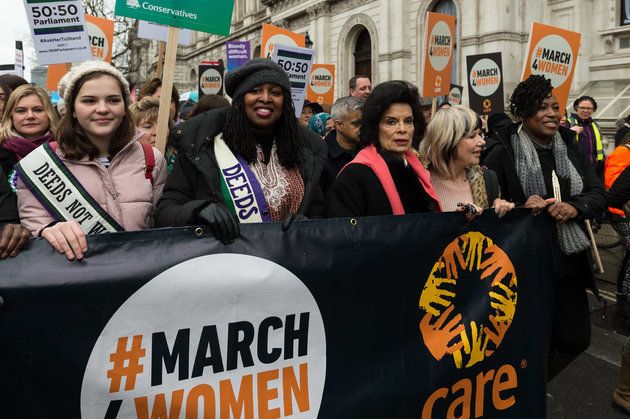
Liberal feminism has hit the mainstream. The act of “manspreading” and “mansplaining” are part of our everyday vernacular and there’s no stopping the coining of new words describing the worst excesses of male behaviour. But are we any closer in engaging men in making progress towards gender equality?
Men aren’t engaging with feminism enough. All the energy in women is primarily focused on fighting specific discriminations women face but men are not always part of the conversation. The movement has a task on its hands to harness the justified anger at experiencing sexism to unite and make change, rather than divide.
There are the Harvey Weinsteins in this world who are maiming the profile of men who have only good intentions to support women. In most instances, men do support gender equality, particularly when it comes to basic feminist ideals such as equal opportunities at work. However, men, in general, benefit from unearned privilege and assumptions about competence in leadership. Their attitude cannot be changed overnight, however we should be facing the differences among us.
So far, some of the ways the movement has engaged with men has felt superficial or tokenistic. Much of the inclusion has been focused on supporting women’s participation in peace processes. But that’s as far as it goes. We have to start understanding where men are in their thinking. They are often less aware of sexism and don’t know how to deal with it when it’s in front of them. They may even be conscious of judgement from male peers and there’s also the issue of the movement putting blame on men, which can alienate them.
The Centre for Women, Peace and Security stated that policies that treat masculinities only as conscious attitudes, risk reinforcing harmful narratives that violence is caused by a few bad men who consciously hold misogynist beliefs. To avoid this trap, “engagement work” needs to remain conscious of the multiple axes of oppression that shape masculinities in any given context. It requires a focus on how structures of sexuality, age, ethnicity, caste, class, all contribute to destructive performances of masculinity, and how less visibly harmful masculinities (such as professional business masculinities) might rely on the oppression of other groups.
It’s clear we need to gain a deeper understanding of masculinity. It’s about finding ways to appeal to men’s existing care for women in their lives. We need to use messages that will appeal to them, as well as invite men to think about their own involvement. How they fit in to wider systems of inequality and privilege, as well as encourage other men by challenging them.
In a talk I attended recently with Fiona MacTaggart, Chair of the Fawcett Society, she had some helpful advice. Many men in dominant roles will often not notice gender inequality so it’s up to women to find something else that makes this assumption without overtly pointing it out. We need to get men to imagine things so far beyond their expectations that they can’t imagine, so they can’t rebuke change. A way to imagine this is with Tube barriers. What if they were redesigned to service left-handed people too? Women can use real-world examples to press for progress.
Women can effect change in the workplace by popularising engagement of men, too. Correlation indicates that when companies commit themselves to gender diversity, they are more successful in productivity, growth and returns. Businesses must make the case that men will benefit. This means some unwelcome changes but in their place will be a set of benefits, like improved relationships at work.
We need a new nirvana, one which is pinned on collaboration over competition. The Suffragettes are almost always presented as a protest by women only. However, this is untrue, as many men were committed to the suffrage cause. Keir Hardie MP regularly raised questions in the House of Commons, and George Lansbury MP resigned his seat over the issue. Examples of a united front are happening in the modern day too. Take British comedy: Catastrophe and Gavin & Stacey were written by a male and female duo, which raised them above others because they reflect two halves of a story, equally. In business, Sheryl Sandberg and Mark Zuckerberg together have taken Facebook to new heights due to their complementary skills. This holistic structure should be reflected in business, the workplace and more widely in society.
I’m not saying that we should stop having women-only conversations – the empowerment process of women is another important part of this wider systemic issue. Without empowered women, men won’t notice them. But it’s possible to engage men to play positive roles in their everyday lives and at work. If men aren’t regarded as allies, we risk alienating the very people we need to help engender positive change. Otherwise, isn’t the feminist movement just talking to itself?
(And in writing this, I bounced a few ideas off my husband in the process.)